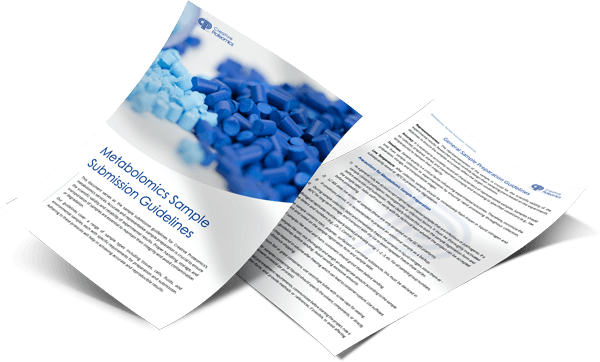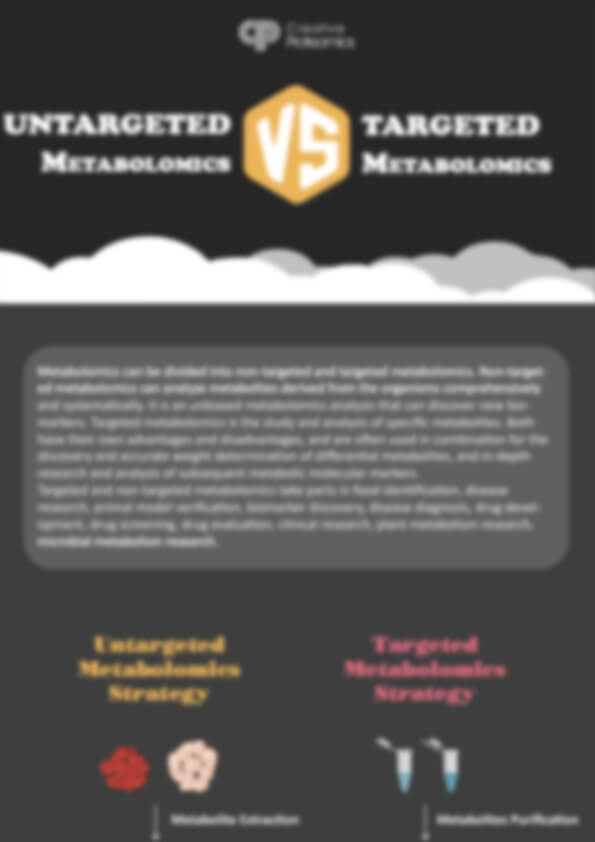Lactic Acid Analysis Service
Creative Proteomics offers precise lactic acid analysis services using advanced technologies like HPLC, LC-MS, and GC-MS. We help researchers, biotechnologists, and healthcare professionals accurately measure lactic acid levels in biological samples, fermentation broths, and industrial processes, supporting studies in metabolism, product quality control, and fermentation efficiency.
Submit Your Request Now
×- What We Provide
- Technology Platform
- Advantages
- Sample Requirements
- Demo
- FAQs
- Publications
What is Lactic Acid?
Lactic acid (C₃H₆O₃) is a key organic acid widely used in pharmaceuticals, food additives, biomedical research, and industrial biotechnology. It exists in two enantiomeric forms (D- and L-lactic acid), with distinct physiological roles. As a metabolic intermediate, its quantification is critical for assessing cellular health, fermentation efficiency, and product quality control. Creative Proteomics specializes in high-precision lactic acid analysis, leveraging advanced technologies to support research and industrial applications.
Lactic Acid Analysis Services Provided by Creative Proteomics
- Quantification of Lactic Acid in Biological Samples: Blood, serum, plasma, urine, tissue, and cerebrospinal fluid (CSF).
- Lactic Acid Profiling in Cell Culture Media: Monitoring lactic acid levels in various cell cultures under different metabolic conditions.
- Metabolic Flux Analysis: Analyzing lactic acid production and consumption in metabolic studies to understand cellular energy pathways.
- Lactic Acid in Sports Science: Measuring lactate accumulation and clearance during exercise to study muscle fatigue and performance recovery.
- Fermentation Process Monitoring: Quantifying lactic acid in biotechnological processes such as fermentation, biofuel production, and food manufacturing.
- Custom Metabolic Profiling: Tailored analysis for specific research needs, including the assessment of lactic acid alongside other metabolites.
| Compound | Matrix Compatibility | Detection Limit (ppm) |
|---|---|---|
| D-Lactic Acid | Serum, fermentation broth | 0.05 |
| L-Lactic Acid | Cell culture media, food | 0.03 |
| Lactate derivatives* | Pharmaceuticals, cosmetics | 0.1–1.0 |
Methods for Lactic Acid Detection
High-Performance Liquid Chromatography (HPLC): Separates and quantifies lactic acid with high sensitivity and reproducibility.
Instrument: Agilent 1260 Infinity
Liquid Chromatography-Mass Spectrometry (LC-MS): Detecting low concentrations of lactic acid and metabolites in complex biological samples.
Instrument: Thermo Scientific Q Exactive HF-X Orbitrap.
Resolution: 140,000 FWHM for precise quantification of glucuronides and sulfates.
Gas Chromatography-Mass Spectrometry (GC-MS): Offers excellent specificity for volatile organic compounds like lactic acid, ideal for complex sample analysis.
Instrument: Agilent 7890B GC with Agilent 5977A MSD

Agilent 1260 Infinity II HPLC (Fig from Agilent)

Q Exactive™ HF-X Hybrid Quadrupole-Orbitrap™ Mass Spectrometer (Fig from Thermo Fisher)

Agilent 7890B Gas chromatography system (Fig from Agilent)
Advantages of Our Lactic Acid Detection
- Ultra-Sensitive Detection: Capable of measuring lactic acid at sub-ppm levels for precise quantification.
- High Accuracy and Reproducibility: Achieves 99.9% reliability through multi-platform validation.
- Dual-Isomer Separation: Accurately distinguishes between D-lactic acid and L-lactic acid isomers.
- Advanced Technology: Utilizes cutting-edge instruments like HPLC-UV/RI and GC-MS for superior performance.
- Fast Turnaround: Delivers results within 14–21 business days for standard projects.
- Customizable Solutions: Tailored methods to meet specific sample and project requirements.
- Comprehensive Reporting: Provides detailed, easy-to-interpret results with full documentation.
- Wide Sample Compatibility: Analyzes diverse matrices, including biological fluids, fermentation broths, and solid samples.
- Expert Support: Access to a team of experienced scientists for technical guidance and consultation.
- Cost-Effective: Competitive pricing with bulk discounts for large-scale projects.
Sample Requirements for Lactic Acid Analysis
| Sample Type | Recommended Sample Volume | Storage Conditions |
|---|---|---|
| Blood/Serum/Plasma | 0.1 mL (minimum) | Store at -80°C if not analyzed immediately |
| Urine | 0.2 mL (minimum) | Store at -20°C |
| Muscle/Liver Tissue | 50 mg (minimum) | Flash freeze in liquid nitrogen; store at -80°C |
| Cell Culture Media | 500 µL (minimum) | Store at -20°C |
| Cerebrospinal Fluid (CSF) | 0.2 mL (minimum) | Store at -80°C |
Applications of Lactic Acid Assay
Biotechnology
Monitoring lactic acid production in fermentation processes for biofuel production and food industries.
Biopharmaceuticals
Monitoring lactic acid levels in cell cultures to optimize bioreactor conditions and ensure cell health.
Sports Science
Measuring lactic acid levels to assess muscle fatigue, lactate threshold, and recovery during physical performance.
Metabolic Studies
Understanding cellular aerobic and anaerobic metabolism, and the shifts between oxidative and glycolytic pathways.
Environmental Science
Studying microbial lactic acid fermentation in wastewater treatment and bioremediation processes.
Food and Beverage Industry
Ensuring product quality and safety by measuring lactic acid in dairy, fermented foods, and beverages.
Demo Result of Targeted Metabolomics Service
Figures come from (Li, Y.et.al, Sci Rep,2023)
FAQ of Lactic Acid Analysis
What is the sensitivity of your lactic acid detection methods?
Our methods detect lactic acid at sub-ppm levels, with limits of detection (LOD) as low as 0.03 ppm for L-lactic acid and 0.05 ppm for D-lactic acid.
Can you distinguish between D-lactic acid and L-lactic acid?
Yes, we use advanced chromatographic techniques like HPLC and GC-MS to accurately separate and quantify both isomers.
How do you handle complex or unconventional sample matrices?
We develop customized protocols for complex matrices, ensuring accurate results even for challenging samples like plant tissues or industrial by-products.
Can you analyze lactic acid in real-time for fermentation monitoring?
Yes, we offer real-time monitoring services to track lactic acid production in fermentation processes, enabling optimization and efficiency improvements.
Do you provide impurity analysis alongside lactic acid quantification?
Yes, we can identify and quantify impurities such as residual sugars, organic acids, and fermentation by-products.
How do you ensure data accuracy and reproducibility?
We use multi-platform validation, including cross-verification with HPLC and GC-MS, to achieve 99.9% reproducibility.
Do you offer stability testing for lactic acid in products?
Yes, we conduct stability testing to evaluate shelf life, degradation, and storage conditions for lactic acid-containing products.
Can you analyze lactic acid in food and beverages?
Yes, we measure lactic acid in dairy, fermented foods, and beverages to ensure quality, safety, and regulatory compliance.
Do you provide support for research projects on lactic acid metabolism?
Yes, we offer specialized services for metabolic studies, including precise quantification and data interpretation.
Can you analyze lactic acid in biodegradable plastics or polymers?
Yes, we provide analysis services for lactic acid in biodegradable plastics, polymers, and other sustainable materials.
How do I prepare and ship samples for analysis?
Samples should be preserved according to our guidelines (e.g., frozen for biological fluids, pH-stabilized for broths) and shipped with cold packs or dry ice.
Learn about other Q&A.
Lactic Acid Analysis Case Study
Publications
Here are some publications in Metabolomics research from our clients:

- Living in extreme environments: a photosynthetic and desiccation stress tolerance trade-off story, but not for everyone. 2023. https://doi.org/10.22541/au.168311184.42382633/v2
- High Levels of Oxidative Stress Early after HSCT Are Associated with Later Adverse Outcomes. 2024. https://doi.org/10.1016/j.jtct.2023.12.096
- Characterization of CYCLOPHILLIN38 shows that a photosynthesis-derived systemic signal controls lateral root emergence. 2021. https://doi.org/10.1093/plphys/kiaa032
- Modulation of the tick gut milieu by a secreted tick protein favors Borrelia burgdorferi colonization. 2017. https://doi.org/10.1038/s41467-017-00208-0
- A human iPSC-derived hepatocyte screen identifies compounds that inhibit production of Apolipoprotein B. 2023. https://doi.org/10.1038/s42003-023-04739-9














